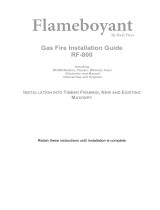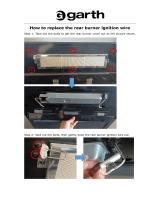
Important:
The appliance shall be installed in accordance with;
• This installation instruction booklet
• Local gas fitting regulations
• Municipal building codes
• Electrical wiring regulations
• Any other relevant statutory regulations.
• AS/NZS 5601:2010 Gas Installations
WARNING:
This appliance must be installed by a qualified person.
Do not modify this appliance.
This appliance is not intended for use by young children or infirm persons unless they have been
adequately supervised by a responsible person to ensure that they can use the appliance safely.
Young children should be supervised to ensure that they do not play with the appliance.
Failure to follow these instructions could cause a malfunction of the heater, which could result
in death, serious bodily injury, and/or property damage. Failure to follow these instructions may
also void your fire insurance and/or warranty.
Who can install this product:
Installation must be carried out by a registered installer who, on completion of the installation,
must issue a:
AUS: Certificate of Compliance
NZ: Certificates that comply with the latest legislation
in accordance with national and/or local codes. If these are not issued then the Escea warranty
may be void.
Warranty Repair and Annual Servicing:
Please contact Escea if you require warranty work. Warranty repair work must be carried
out by a recognised gas fire technician. It is recommended that recognised Escea Gas Fire
Technicians are also used to carry out annual servicing requirements (particularly during the
warranty period). For contact details of recognised Escea Gas Fire Technicians in your area, or
for replacement parts, please contact the retailer from whom the appliance was purchased our
visit our website.
The heater must be installed according to these instructions and in compliance with all relevant
building, gas fitting, electrical and other statutory regulations (e.g. AS/NZS 5601). Any
shortcomings in the appliance and flue installation will be the responsibility of the installer, and
Escea will not be accountable for any such failings or their consequences.
Manufactured by: Escea Ltd, PO Box 5277 Dunedin NZ, Ph: +64 3 478 8220. For contact
details of your local Escea distributor or dealer in New Zealand, please visit: www.escea.com or
email:
[email protected]. F
rom Australia, please visit www.escea.com.au, call AU
: 1800 460 832





















